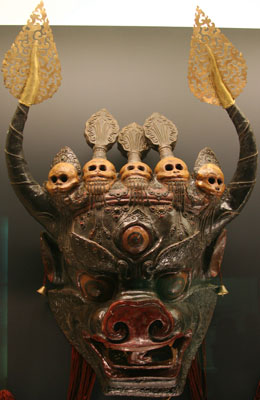Decorative Designs in Chinese Art 中国文物的纹饰
Lacquer Ware 漆器
Click on any word to see more details.
Lacquer Ware 漆器
Lacquer ware artifacts are made from wood or silk skeletons with several to dozens of coats of lacquer. In some cases, up to two hundred layers have been applied. Lacquer ware dates back to pre-historic times in China. The oldest piece is a bowl from the Hemudu Culture 河姆渡文化 in present day Zhejiang province and dates to about 5,000 BCE. Lacquer ware utensils were popular with the noble classes in the Xia, Shang, and Zhou dynasties. The lacquer used is resistant to acid deterioration and has enabled the artifacts to survive relatively well. Many lacquer artifacts have survived from the Warring States period in tombs in excellent condition. The Kingdom of Chu during the Warring States period was on of the most prolific producers of lacquer artifacts.
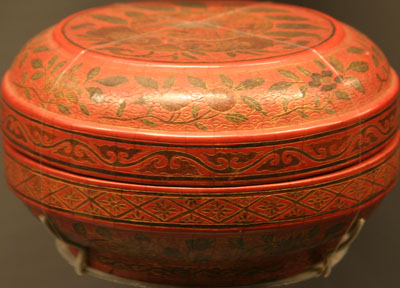
The lacquer was derived from lac trees 漆树 that are common in Hubei and Hunan. The basic background colors are red and black with decorations painted done in more diverse colors. Lacquer ware art reached its peak during the reign of Qianlong during the Qing. The plate below is a plate from the Qianlong reign.
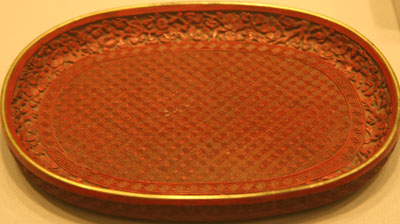
The picture below shows a landscape scene on a carved lacquer screen.
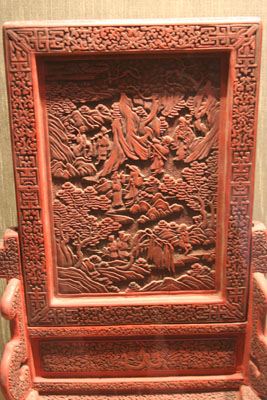
Because of the many layers and the need to dry each layer before applying the next, the best lacquer ware can take up to ten years to produce.

Lacquer ware is frequently inlaid with gold, silver, mother-of-pearl, ivory, and other materials. The artifact below is decorated with inlaid gold.
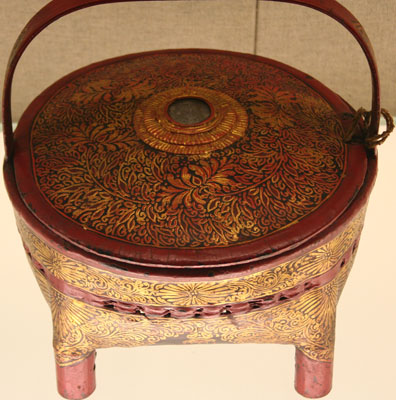
Tibetan art is unique in combing elements of Indian and Chinese art with an emphasis on strange and sometimes scary Tantric Buddhism and drawing on roots in Tibetan folk religion. The Yamantaka 牛头明王, a Tantric Buddhist diety and Tibetan favorite, is typically intimidating.
Chinese
Pinyin English
